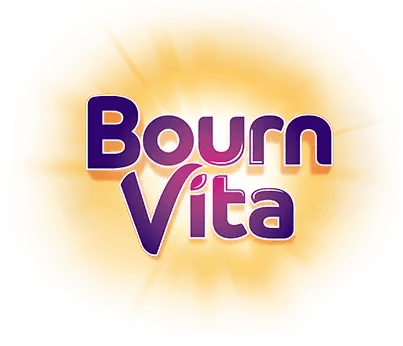- Appropriate Portions
- Whole Food Groups
- Appropriate Energy Intake
- Healthy Fats Are Important
- Hydration Is Key
- Healthy Snacking is Important
forming strong identities and opinions about what they like and dislike. This is also one of the most active phases of growth in children as your child will be developing cognitively, physically, and emotionally at an improved rate while pondering deeper concepts and developing their personality.
Therefore, at this crucial phase of growth and development, it is ideal to feed your children a balanced, healthy diet. This will not only ensure your kids do not become fussy eaters but also help lower the risk of developing food intolerances and allergies. However, it is important to understand what makes a balanced diet for second graders, as incorrect diets can lead to malnourishment or lifestyle diseases like obesity and diabetes.
Follow this quick guide on what makes a balanced diet for second graders.
What Makes For A Balanced Diet For Second Graders?
Appropriate Portions
Since kids have much smaller stomach cavities, they cannot eat as much as adults. It is recommended that they be fed a fist-size portion of different food groups like fruits, vegetables, whole grains, and proteins. But remember, the first should be theirs, as that roughly determines their nutritional requirements according to their age. Try to make half your second grader’s plate full of fruits and vegetables and divide the other half between proteins and carbs. The portion of fruits and vegetables may take more space, but proteins and carbs should not be consumed excessively.
Whole Food Groups

Whole food groups comprise fruits, vegetables, whole grains, dairy, poultry, legumes, nuts, and seeds. They should comprise the majority, if not the entirety of your kids’ diet. These whole food groups are rich in vitamins, minerals, proteins, dietary fiber, and antioxidants, which prevent and lower the risk of diseases. Try to make quinoa bowls, vegetable Buddha bowls, and daal a part of your kids’ daily diet, not only are they simple dishes that look and sound fancy, but incorporate grains, vegetables, legumes, and more in good proportions.
Appropriate Energy Intake
Since an individual’s calorie intake depends on their age, gender, weight, and level of activity, there is no fixed universal energy guideline. However, generally, kids aged 7 and 8 require around 60 to 65 kilocalories per kg of body mass daily. So, if your child weighs 25 kilos, they will need around 1500 to 1625 kcal per day.
Healthy Fats Are Important

It is crucial to incorporate healthy fats into your second grader’s diet while cutting down on their trans-fat intake. Among healthy fats, saturated fats benefit kids when consumed in moderation, and unsaturated fats do the body a world of good when consumed in adequate amounts, often reversing the effects of unhealthy fats and bad cholesterol. Trans fat (unhealthy) is found in processed and fast foods, while saturated fat is abundant in red meat and high-fat dairy. Unsaturated fats are found in fatty fish, nuts, seeds, cold-pressed oils, olives, eggs, and milk, and help the body absorb essential vitamins.
Hydration Is Key

Hydration is important for growing children as it not only acts as a mode of transport for nutrients but also serves as a solvent and substrate for major metabolic reactions. However, more than 75% of kids fail to meet their daily water intake. Kids weighing 20 kg should consume at least 1500 ml of water daily, with 20 ml per kilo after that. Therefore, it is essential for kids to meet their daily hydration requirements. Luckily, while water is the best source of hydration, lemonades, fruit juices, and dairy drinks also serve a similar purpose but should be consumed in moderation.
Healthy Snacking is Important
It is wise to ensure a snack or two between the three main meals of the day, as this can help divide the daily energy requirements more evenly throughout the day, to avoid overtaxing your second grader’s digestive system. And ensure that these snacks are healthy home foods. Fast foods will only undo all the good work their healthy balanced diet has achieved. Also, snacks like popcorn, nuts, dried fruits, air-fried vegetable chips, and Greek yogurt with granola are wonderful snacks that both satisfy your kids’ cravings without costing too many calories and provide their bodies with essential nutrients.
Conclusion
It is important to make sure your second graders eat a healthy, balanced diet, but it is easier said than done, as most of them prefer reaching out for chips instead of popcorn. In such cases, try to keep fast food away from the household, explain its negative impacts, and try to include them in the making of healthier foods. Kids are smart nowadays and you cannot lie to them. But you can be honest and try to make them understand the health benefits of whole foods. Slowly but surely, your kids will give healthy foods a decent chance if you persevere.
Kaushiki Gangully is a content writing specialist with a passion for children's nutrition, education, and well-being. With more than five years of writing experience and a science-based background, she provides nuanced insights to help families raise happy, healthy kids. Kaushiki believes in making learning and healthy eating fun, empowering parents with practical, easy advice.
The views expressed are that of the expert alone.
The information provided in this content is for informational purposes only and should not be considered a substitute for professional medical advice, diagnosis, or treatment. Always seek the advice of your physician or another qualified healthcare provider before making any significant changes to your diet, exercise, or medication routines.
References
https://www.ncbi.nlm.nih.gov/books/NBK562207/
https://www.nin.res.in/rdabook/brief_note.pdf
https://www.nin.res.in/downloads/DietaryGuidelinesforNINwebsite.pdf
















